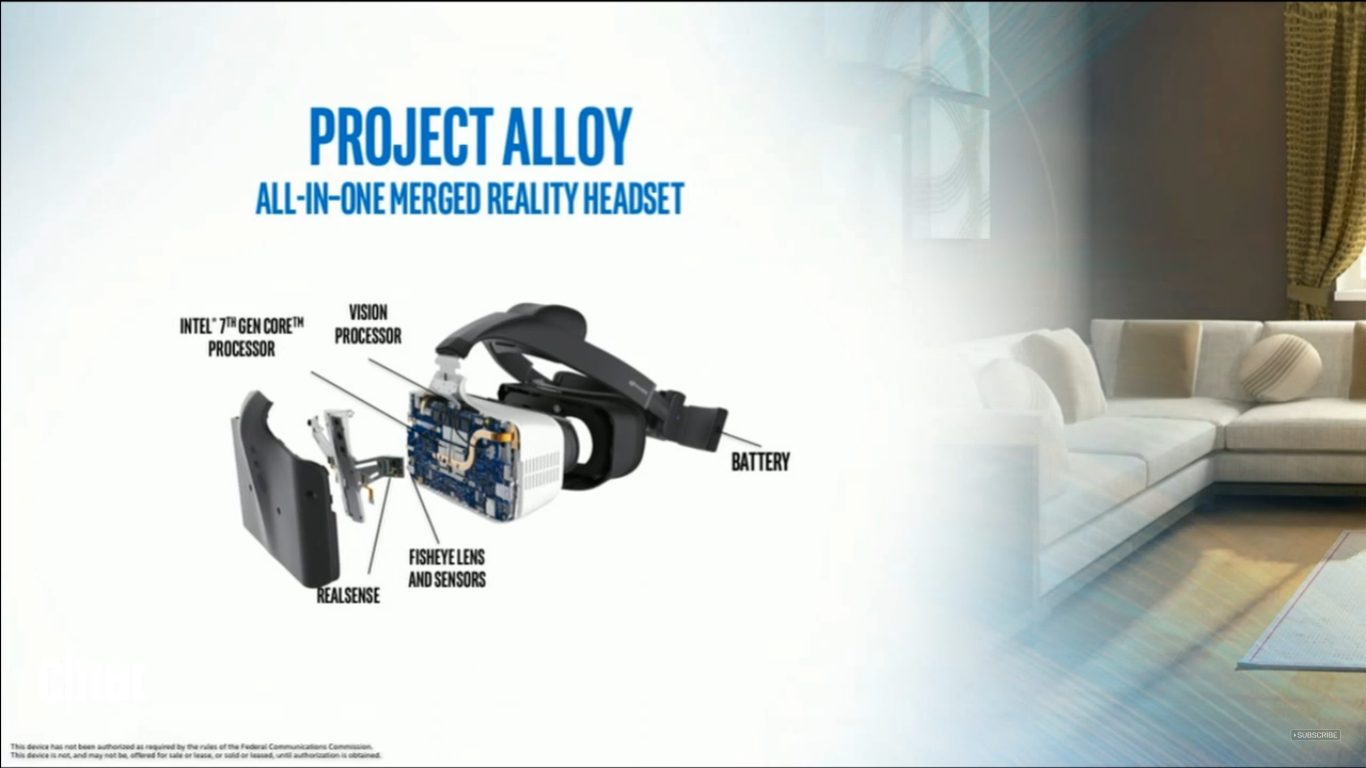Project Alloy, Intel’s VR headset with mixed reality (MR) capabilities revealed at Intel Developer Forum last August, got a little extra stage time this CES, as Intel showed off some more of the headset’s gaming chops.
The video shows two users playing a multiplayer wave-based shooter from the comfort of a living room. Since it’s a tetherless mobile VR experience, the entire play space is made available for the users, and even re-skins common household fixtures like furniture as game elements. It’s unsure if what we saw on stage was a true live demo, or an orchestrated tech demo of what ‘could be’.
Intel, dubbing Project Alloy a “merged reality” experience, says that thanks to RealSense, the headset will be capable of both positional room-scale tracking and hand-detection. The company also stated at IDF that the headset is capable of “collision detection and avoidance,” enabling users to traverse large volumes of space without running into walls and other objects.

Hardware specifics are still thin, but PCWorld reports the prototype headset has a pair of RealSense depth cameras positioned basically on either side of the user’s nose, along with two RGB cameras at roughly the user’s eye line, and a pair of fisheye cameras at the edge of the visor. Those sensors can be used to render the wearer’s surroundings in virtual reality.
Intel CEO Brian Krzanich announced at CES that Project Alloy will start shipping in Q4 of 2017.
We have feet on the ground at CES in Las Vegas. We’ll be swinging by the Intel booth for a look at Project Alloy and reporting all things AR/VR (and MR) in the coming days.






